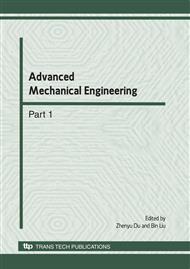[1]
J.A. Joines, C.T. Culbreth, R.E. King.: Manufacturing cell design: an integer programming model employing genetic algorithms. IIE Transactions Vol. 28 (1996) 69-85.
DOI: 10.1080/07408179608966253
Google Scholar
[2]
E.C. Brown, R.T. Sumichrast.: CF-GGA: a grouping genetic algorithm for the cell formation problem. International Journal of Production Research Vol. 39 (2001) 3651-3670.
DOI: 10.1080/00207540110068781
Google Scholar
[3]
E. Vila Goncalves Filho, A. José Tiberti.: A group genetic algorithm for the machine cell formation problem. International Journal of Production Economics Vol. 102 (2006) 1-21.
DOI: 10.1016/j.ijpe.2004.12.029
Google Scholar
[4]
Tariq, A., Hussain, I., Ghafoor, A.: A hybrid genetic algorithm for machine-part grouping. Computers & Industrial Engineering Vol. 56 (2008) 347-356.
DOI: 10.1016/j.cie.2008.06.007
Google Scholar
[5]
P. Larrañaga, Lozano, J. A.: Estimation of Distribution Algorithms: A �ew Tool for Evolutionary Computation. Kluwer Academic Publishers (2002).
Google Scholar
[6]
Pelikan, M., Sastry, K., Cantú-Paz, E.: Scalable optimization via probabilistic modeling: From algorithms to applications. Springer, Heidelberg (2006).
DOI: 10.1007/978-3-540-34954-9_1
Google Scholar
[7]
S. Baluja. Population-Based Incremental Learning: A Method for Integrating Genetic Search Based Function Optimization and Competitive Learning, Carnegie Mellon University, Technical Report CMU-CS-94-163. (1994).
Google Scholar
[8]
Gon alves JF, Resende MGC. An evolutionary algorithm for manufacturing cell formation. Computers & Industrial Engineering. Vol. 47 (2004) 247-273.
DOI: 10.1016/j.cie.2004.07.003
Google Scholar
[9]
Zhang Qingbin ,Wu Tihua ,Liu Bo. Hybrid univariate marnal distribution algorithm based on clonal selection principle. Journal of Zhejiang University (Engineering Science). Vol. 41 (2007) 1715-1718.
Google Scholar


